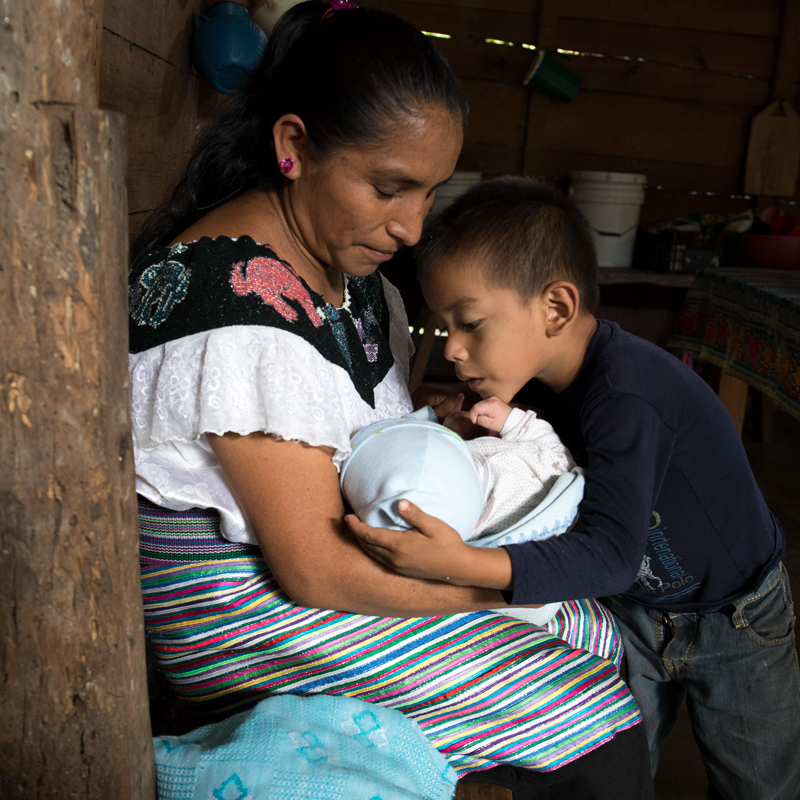
Total Awarded: $5,240,000
Duration: 2015 - present
Total Grants: 13
Geographic Focus: India
Background
For more than 20 years, MacArthur has supported work to improve population and reproductive health (PRH) in India. Since then, India has made significant strides in maternal health, reducing its maternal mortality ratio from 556 to 174 maternal deaths per 100,000 live births from 1990 to 2015. Policies and initiatives to increase access to maternal health services largely account for this progress. However, maternal mortality and infant mortality rates remain high. These patterns indicate that further improvements in health care access are unlikely to generate significant improvements in maternal and newborn health outcomes. Instead, to accelerate reductions in morbidity and mortality rates, other factors—particularly maternal health quality of care—need to be addressed.
What We Evaluated
Within this context, the Foundation aims to support the shift in the maternal health field from a focus on increasing access to care to one on improving the quality of care. It is doing so through a three-and-a-half year maternal health quality of care strategy that marks the end of the Foundation’s support to the PRH field in India. In order to inform the implementation and evaluation of this strategy, the Foundation commissioned Mathematica Policy Research to conduct a landscape of the social, political, and environmental conditions that are currently influencing the delivery of quality maternal health care in India.
What We Learned
Evidence suggests that the quality of maternal health care varies across India. However, on average, it is low. The limitations of maternal health quality of care can be summarized as follows:
- Poor Delivery of Clinical Care: Studies have found that fewer than one-third of providers in India adhere to clinical guidelines; fewer than half of clinical interactions result in correct diagnoses and treatment; and fewer than one-third of rural health subcenters have regular supplies of water, electricity, blood, medicines, and other treatments (Das et al. 2015, 2012; Muldoon et al. 2011).
- Lack of Patient-Centered Care: Patient-centeredness is not a concept commonly practiced by providers or understood by patients. Surveyed patients in India reported general satisfaction with their care; however, they also indicated barriers to explanations about medications and treatment options. Patients also reported a lack of respect, empathy, and compassion (or cultural competence) from their health care providers and lack of privacy when seeking care (Ardey and Ardey 2015; Narichiti 2013).
- Inequitable Delivery of Care and Inefficient Health System: A disproportionate share of facilities and providers in urban settings hinders access to care among the approximately 67 percent of India’s population that lives in rural settings (World Bank 2017; Ministry of Health and Family Welfare 2014). Data also show disparities in delivery of care: mothers with lower income and literacy, and from tribal groups, scheduled castes, and rural areas are less likely than their counterparts at other socioeconomic levels to receive and use maternal health care (Vora et al. 2009). Provider absenteeism, mismanaged facilities, fiscal irresponsibility, poor regulation, and corruption have also been cited as obstacles to the efficient delivery of care.
To address some of these deficiencies, donor investments, government prioritization, and an active civil society have intensified the focus on maternal health quality of care in recent years through a focus on the following three areas:
- Supply: Most supply interventions implemented to date focus on training providers to improve their skills, competencies, and adherence to guidelines and evidence-based practices, and to increase facility resources and coordination. Studies of these initiatives suggest that health care capacity can be expanded by training midlevel providers to deliver services usually offered through doctors; this shift of responsibilities between health care workers has been found to have no effect on the quality of care, and was actually found to increase supply of emergency maternal health services, decrease costs and other barriers, and improve the management of pregnancy complications (Iyengar and Iyengar 2009; Jejeebhoy et al. 2011; Iyengar 2014).
- Demand: Studies of demand-side initiatives indicate that community-based education campaigns and cash incentive programs can improve women’s demand for health care. However, cash incentives were not found to be associated with reduced maternal mortality (Achyut et al. 2016; Amudhan et al. 2013; Banerjee et al. 2013; Bloom et al. 2001; Kumar et al. 2011; Gupta et al. 2012; Leon et al. 2014; Lim et al. 2010; More et al. 2012; Ng et al. 2014; Powell-Jackson et al. 2016; Tripathy et al. 2010; Randive et al. 2013).
- Advocacy: Many activists and policymakers across India have used evidence to advocate for funding to enact or scale-up programs that improve the quality of maternal health services, such as training for accredited social health activists (ASHAs). To support the dissemination of evidence and mobilize the community, several networks dedicated to maternal health have formed across India, including the White Ribbon Alliance for Health India (WRAI 2016). However, information is limited on the success of advocacy initiatives and their effect on maternal health services and outcomes.
Research on these interventions has helped identify promising approaches to improving maternal health outcomes in India. However, the evidence is only emerging. As poor outcomes and inequities persist across India, opportunities remain to explore the way forward for maternal health quality of care and to generate further data on the best policies and practices for improving maternal health outcomes. Such efforts may represent the critical means through which India can significantly contribute to the United Nations Sustainable Development Goal of reducing the global MMR to 70 maternal deaths per 100,000 live births by 2030.
More Information
Evaluation and Learning for the Maternal Health Quality of Care Strategy in India ›
Midline Evaluation for Maternal Health Quality of Care in India ›



